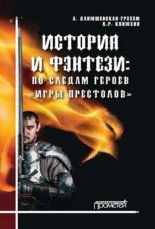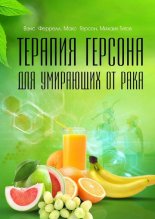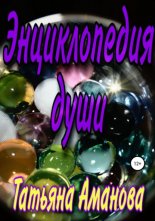Тайная жизнь мозга. Как наш мозг думает, чувствует и принимает решения Сигман Мариано

(2) Признание чужих знаний о чем-либо (теория разума).
(3) Понимание несоответствия между двумя наборами знаний.
(4) Наличие мотивации для преодоления этого несоответствия.
(5) Наличие коммуникативного аппарата (язык, жесты) для достижения этой цели.
Для первых двух пунктов этого списка я предлагаю радикальную гипотезу, которая естественным образом вытекает из идеи педагогического инстинкта.
Мое предположение: дети начинают учить, не принимая во внимание реальные знания ученика или даже собственные знания. В сущности, они могут учить куклу, море или камень. С этой точки зрения обучение других предшествует формированию теории разума и обеспечивает опыт для ее усвоения. Оно помогает нам мысленно встать на место другого человека и приписывать ему определенные мысли и намерения. Сходным образом дети учат других вещам, о которых они сами мало осведомлены, и при этом закрепляют собственные знания. Здесь мы возвращаемся к знаменитому изречению Сенеки и глубже понимаем его суть. Docendo discimus – обучая других, мы учимся сами. Мы учимся не только тому, чему учим, но также проверяем свои и чужие знания. Мы не только лучше знакомимся с предметом, но и узнаем что-то новое о себе и других.
Мы видели, что учеба тесно связана с переводом новой информации на язык нашего индивидуального мышления. Обучение других тоже требует перевода, в процессе которого мы не только проводим обзор фактов (грызем гранит науки), но и упрощаем, резюмируем, подчеркиваем и думаем о том, как выглядит проблема с точки зрения другого человека. Все эти задачи, присущие педагогике, служат движущей силой обучения.
Человек, знакомый с теорией разума, может рассуждать с позиции другого и понимать, что двое людей могут прийти к разным выводам. В лаборатории это можно продемонстрировать следующим образом. Первый человек видит пакет сладостей. Знать, что находится внутри, он не может. Потом он видит, как кто-то вынимает конфеты из пакета и кладет туда шурупы. В комнату заходит Билл, который не видел происходившего раньше. Вопрос для первого человека: что, с точки зрения Билла, находится в пакете? Для ответа первому человеку необходимо проникнуть в мысли Билла.
Человек, вооруженный теорией разума, понимает, что в данной ситуации для Билла самой естественной будет мысль о том, что в пакете лежат конфеты. Человек, не знакомый с теорией разума, предположит, что Билл думает, будто пакет наполнен шурупами. Этот простой пример открывает широкий спектр проблем, включающих понимание того, что другой человек обладает не только иными знаниями, но и другим эмоциональным складом, предпочтениями и способами рассуждения. Теория разума в первые месяцы жизни присутствует лишь в рудиментарном виде и медленно формируется в процессе развития ребенка.
Мы с Сесилией Калеро подтвердили первую часть гипотезы, согласно которой обучение – это процесс консолидации теории разума. Мы видели, что детям не нужно проверять объем знаний других людей, чтобы учить их. Дети учат даже в тех случаях, когда не имеют представления о знаниях ученика. Внимательно наблюдая за развитием наших маленьких учителей, мы собираемся подтвердить правоту самой интересной гипотезы: при обучении других людей дети формируют собственную теорию разума.
Более широким признанием в наши дни пользуется вторая гипотеза, связанная с педагогическим инстинктом и гласящая, что обучение других людей помогает закрепить знания самого учителя. Эстафетная палочка Сенеки была подхвачена Жозефом Жубером, генеральным инспектором французских университетов при Наполеоне, с его знаменитой фразой «Учить – значит учиться дважды». Современный вариант этой идеи, согласно которому ученик иногда должен выступать в роли учителя, обусловлен потребностями нашей системы образования.
Назначение наставников для учеников – чрезвычайно эффективная педагогическая мера, но невозможно приставить к каждому ученику опытного наставника. Одно из решений, успешно опробованных во многих инновационных системах преподавания, – наставничество сверстников: учеников, которые временно выступают в роли учителей, дополняя образование своих одноклассников. Такое часто происходит в сельских школах, где несколько учеников разного возраста делят одну классную комнату. Это также случается за пределами школьной системы.
Один из величайших современных лингвистов Андреа Моро отметил, что родным языком для детей становится не язык их матери, а язык их друзей. Дети, живущие за границей, свободнее говорят на языке своих сверстников, чем на языке своих родителей. Внедрение «наставничества сверстников» в классах вносит в формальное образование то, что давно распространено и эффективно в школе жизни.
Даже если обучение у сверстников не так эффективно, как у опытных наставников, у него есть огромное преимущество – юный преподаватель учится сам, когда учит других. Этот эффект наблюдается, даже если учитель и ученик одного возраста, а также при взаимном обучении, когда дети чередуют роли учителей и учеников.
Такое многообещающее новшество необходимо поощрять в педагогической практике. Но результат может быть неоднозначным. Иногда дети делают огромные успехи, выступая в роли учителей. В других случаях этого не происходит. Если мы поймем, когда эта методика бывает полезной, то получим эффективный рецепт для повышения качества образования и одновременно раскроем важный секрет обучения.
Род Роско и Мишлен Чи обнаружили, что юные преподаватели получают большую пользу от своей работы, когда следуют этим принципам:
(1) Тренируют и проверяют свои знания, что позволяет им находить свои ошибки, нивелировать пробелы и создавать новые идеи.
(2) Проводят аналогии или находят метафоры, устанавливая связь разных понятий и определяя приоритетность информации. Преподавание – это не перечисление фактов, а скорее создание истории, которая связывает их в рамках сюжета.
Эти принципы напоминают концепцию «дворца памяти», которую мы уже рассматривали. Конструкция памяти больше похожа на творческий процесс, чем на пассивное хранение информации в потайных уголках и закоулках мозга. Воспоминания становятся эффективными, прочными и долговечными, если они организованы в логичную визуальную схему, сходную с логикой дворцовой архитектуры. Мы можем распространить эту идею на мышление в целом. Ученики, выступающие в роли учителей, упорядочивают уже приобретенные концепции в новых структурах, более подходящих для запоминания, и самое главное, для приобретения знаний. Они строят свои «дворцы мышления».
Эпилог
Мне было около шестнадцати лет, когда я прочел рассказ о двух людях, безумно любивших друг друга. Однажды вечером они долго и страстно занимались любовью, а потом он пошел в душ. Она курила в постели и наслаждалась ощущением близости, еще не покинувшим ее тело. Он неожиданно поскользнулся, упал и ударился головой о край ванны. Он умер без звука, и никто, даже она, не знал, что произошло. Это история об одном мгновении, когда они находятся в нескольких метрах друг от друга и она безмерно счастлива от любви к нему, а он мертв.
Не помню, кто написал этот рассказ, не помню даже названия. Потом я наткнулся на такую же идею в последней новелле антологии под редакцией Борхеса и Биой Касареса под названием «Большой и странный мир»: «Говорят, Данте в сороковой главе La Vita Nuova рассказывает, что когда он гулял по улицам Флоренции, то был удивлен, обнаружив паломников, которые ничего не знали о его возлюбленной Беатриче».
Моя книга, – возможно, как и мои научные поиски, – это способ ответить на вопросы, скрытые в этих историях. Полагаю, что так или иначе все мы разделяем это побуждение. Это raison d’etre[99]слов, объятий и любви, а также ссор, разногласий и ревности. Наши чувства и убеждения, все наши идеи выражаются в рудиментарном языке тела.
Если формулировать идею этой книги в одном предложении, я бы сказал, что это стремление сделать человеческое мышление прозрачным. С первой до последней страницы она посвящена этой цели. Все эксперименты с маленькими детьми нужны для лучшего понимания их желаний, потребностей и добродетелей, которые остаются скрытыми из-за отсутствия языковых навыков. Понимание механизма принятия решений, движущей силы смелости, причин наших капризов и убеждений – это способ разобраться в процессах мышления, прячущихся под маской сознания. И наконец, педагогика, которая занимает такое важное место в последней главе, с точки зрения нейронауки – человеческое достижение, позволяющим нам сближаться друг с другом, делиться своими мыслями и знаниями. И в итоге наш мир оказывается не таким большим и странным местом.
Приложение: география мозга
При изучении мозга принято различать его разные области. Некоторые из них ограничены бороздами или расщелинами. С помощью этого метода кору головного мозга, включающую поверхность обоих полушарий, можно разделить на четыре больших области: лобную, теменную, затылочную и височную. К примеру, между лобной и теменной корой проходит центральная борозда.
Каждый из этих больших отделов коры участвует в разных функциях, но имеет определенную степень специализации. Лобная кора – «диспетчерская вышка» мозга. Без нее мы не могли бы воздерживаться от еды, когда понимаем, что это вредно (хотя мы и голодны). Лобная кора регулирует, тормозит и активизирует различные мозговые процессы, а также составляет планы. Затылочная кора управляет зрительным восприятием. Теменная кора объединяет и координирует информацию, поступающую от органов чувств, с физическими действиями. Она отвечает за нашу способность поймать мяч, направляя наши движения в соответствии с поступающей в реальном времени информацией о его скорости и траектории. Височная кора записывает воспоминания и работает как связующее звено между зрением, слухом и речью.
Эти большие отделы, в свою очередь, подразделяются на более мелкие, имеющие свои анатомические критерии или функциональные роли. К примеру, моторная кора – это область лобной коры, которая управляет мышцами, а соматосенсорная кора – область теменной коры, координирующая тактильное восприятие.
В расщелине, разделяющей полушария мозга, мы можем выделить зоны лобной коры. Вентромедиальная префронтальная кора и орбитофронтальная кора участвуют в разных аспектах принятия решений, таких как оценка преимуществ и рисков. Поясная кора находится под лобной и теменной корой. Отдел, ближайший к лобной области (передняя поясная кора), играет основную роль в нашей способности наблюдать за своими действиями и контролировать их. Когда вы сразу после поступка понимаете, что совершили ошибку, об этом сигнализирует именно передняя поясничная кора. С другой стороны, задняя поясничная кора (ближайшая к затылку) активируется, когда ваши мысли начинают блуждать или когда вы предаетесь дневным грезам. И наконец, в центре мозга находится таламус, который отключается, когда вы спите или находитесь под анестезией, и включается при пробуждении.
Библиография
1. Истоки мышления
Abrams, David S., Marianne Bertrand and Sendhil Mullainatban. ‘Do judges vary in their treatment of race?’, The Journal of Legal Studies 41.2 (2012): 347–83
Anderson, Peter. ‘Assessment and development of executive function (EF) during childhood’, Child Neuropsychology 8.2 (2002): 71–82
Bialystok, Ellen. Bilingualism in Development: Language, Literacy, and Cognition. Cambridge University Press, 2001
Carey, Susan. The Origin of Concepts. Oxford University Press, 2009
Costa, Albert, Mireia Hernandez and Nuria Sebastian-Galles. ‘Bilingualism aids conflict resolution: evidence from the ANT task’, Cognition 106.1 (2008): 59–86
Diamond, Adele. ‘Executive functions’, Annual Review of Psychology 64 (2013): 135–68
Diamond, Adele, and Patricia S. Goldman-Rakic. ‘Comparison of human infants and rhesus monkeys on Piaget’s AB task: evidence for dependence on dorsolateral prefrontal cortex.’, Experimental Brain Research74.1 (1.989): 24–40
Dipboye, Robert L., Richard D. Arvey and David E. Terpstra. ‘Sex and physical attractiveness of raters and applicants as determinants of resume evaluations’, Journal of Applied Psychology 62.3 (1.977): 288
Gallese, Vittorio, and Alvin Goldman, ‘Mirror neurons and the simulation theory of mind-reading’, Trends in Cognitive Sciences, 2.12 (1998): 493–501
Garbin, Gabrielle, et al. ‘Bridging language and attention: brain basis of the impact of bilingual ism on cognitive control’, Neuroi 53.4 (2010): 1272–8
Gergely, Gyorgy, and Gergely Csibra. ‘Teleological reasoning in infancy: the naive theory of rational action’, Trends in Cognitive Sciences 7.7 (2003): 287–92
Gergely, Gyorgy, Harold Bekkering and Ikiiko Kiraly. ‘Developmental psychology: rational imitation in preverbal infants’, Nature 415.6873 (2002): 755
Hamlin, J. Kiley, and Karen Wynn. ‘Young infants prefer prosocial to antisocial others’, Cognitive Development, 26.1. (201.1): 30–39
Hamlin, J. Kiley, Karen Wynn and Paul Bloom. ‘Social evaluation by preverbal infants’, Nature450.7169 (2007): 557–9
Hamlin, J. Kiley, et al. ‘Not like me = bad: infants prefer those who harm dissimilar others’, Psychological Science (201.3): 589–94
Hood, Bruce, Susan Carey and Sandeep Prasada. ‘Predicting the outcomes of physical events: two-year-olds fail to reveal knowledge of solidity and support’, Child Development 71.6 (2000): 1540–54
Izard, Veronique, et al. ‘Newborn infants perceive abstract numbers’, Proceedings of the National Academy of Sciences 106,25 (2009): 10382–5
Kinzler, Catherine D., Emmanuel Dupoux and Elizabeth S. Spelke. ‘The native language of social cognition’, Proceedings of the National Academy of Sciences 104.30 (2007): 1.2577–80
Cuhl, Patricia K. ‘Early language acquisition: cracking the speech code’, Nature Reviews Neuroscience 5. 11. (2004): 831–43
Meltzolf, Andrew N., and M. Keith Moore. ‘Imitation of facial and manual gestures by human neonates’, Science 198.4312 (1977): 75–8
Meltzoff, Andrew N., and Richard W. Borton. ‘Intermodal matching by human neonates’, Nature282.5737 (1979): 403–4
Mesz, Bruno, Marcos A. Trevisan and Mariano Sigman. ‘The taste of music’, Perception 40.2 (2011): 209–19
Nunez, Rafael E., and Eve Sweetser. ‘With the future behind them: convergent evidence from Aymara language and gesture in the crosslinguistic comparison of spatial construals of time’, Cognitive Science 30.3 (2006): 401–50
Posner, Michael L, and Stanislas Dehaene. ‘Attentional networks’, Trends in Neufosciences 17.2 (1994): 75–9
Ramachandran, Vilayanur S., and Edward M. Hubbard. ‘Synaesthesia – a window into perception, thought, and language’, Journal of Consciousness Studies 8.1.2 (2001): 3–34
Ramus, Pranck, et al. ‘Language discrimination by human newborns and by cotton-top tamarin monkeys’, Science, 288.5464 (2000): 349–51
Rochat, Philippe. Early Social Cognition: Understanding Others in the First Months of Life. Psychology Press, 2014
Rueda, M. Rosario, et al. ‘Development of attentional networks in childhood’, Neuropsychologic, 42.8 (2004): 1029–40
Saffran, Jenny R., Richard N. Aslin and Elissa L. Newport. ‘Statistical learning by 8-month-old infants’, Science 274.5294 (1996) 1926–8
Schulz, Laura, Tamar Kushnir and Alison Gopnik. ‘Learning from doing: intervention and causal inference’, Causal Learning: Psychology, Philosophy, and Computation (2007): 67–85
Sigman, Mariano, et al. ‘Neuroscience and education: prime time to build the bridge’, Nature Neuroscience 1.7.4 (2014): 497–502
Valvo, Alberta. Sight Restoration after Long Term Blindness: The Problems and Behavior Patterns of Visual Rehabilitation. American Foundation for the Blind, 1971
2. Зыбкие границы личности
Ais, Joaquin, et al. ‘Individual consistency in the accuracy and distribution of confidence judgments’, Cognition 1.46 (2016): 377–86
Artely, Dan, and George Loewenstein. ‘The heat of the moment: the effect of sexual arousal on sexual decision making’, Journal of Behavioral Decision Making 1.9.2 (2006): 87–98
Barttfeld, Pablo, et al. ‘Distinct patterns of functional brain connectivity correlate with objective performance and subjective beliefs’, Proceedings of the National Academy of Sciences 1.10.28 (2013): 1.1577–82
Rechara, Antoine, et al. ‘Deciding advantageously before knowing the advantageous strategy’. Science275.5304 (1.997): 1293–5
Brodsky, Warren. Driving With Music: Cognitive-Behavioural Implications. Ashgate Publishing, 2015
Cesarini, David, et. al. ‘Herttability of cooperative behavior in the trust game’, Proceedings of the. National Academy of Sciences 105.10 (2008): 3721–6
Chaim, and Uri Gneezy. ‘Discrimination in a segmented society: an experimental approach’, The Quarterly Journal of Economics 116.1 (2001): 351–77
Charness, Gary, and Uri Gneezy. ‘What’s in a name? Anonymity and social distance in dictator and ultimatum games’, Journal of Economic Behavior & Organization 68.1 (2008): 29–35
Costa, Albert, et al. ‘Your morals depend on language’ PloS One 9.4 (201.4): e94842
Croson, Rachel, and Nancy Buchan. ‘Gender and culture: international experimental evidence from trust games’, The American Economic Review 89.2 (1.999): 386–91.
Croson, Rachel, and Uri Gneezy. ‘Gender differences in preferences’, Journal of Economic Literature47.2 (2009): 448–74
Danziger, Shai, Jonathan Levavand Liora Avnaim-Pesso. ‘Extraneous factors in judicial decisions’, Proceedings of the National Academy of Sciences 1.08.17 (2011): 6889–92
Dehaene, Stanislas, et al. ‘Imaging unconscious semantic priming’, Nature 395.6702 (1998): 597–600
Delgado, Mauricio R., Robert H. Prank and Elisabeth A. Phelps. ‘Perceptions of moral character modulate the neural systems of reward during the trust game’, Nature Neuroscience 8.11 (2005): 1611–18
Di Telia, Rafael, et al. ‘Conveniently upset: avoiding altruism by-distorting beliefs about others’ altruism’, The American Economic Review 105.11 (201.5): 341.6–42
Diiksterhuis, Ap, et al. ‘On making the right choice: the deliberation-without-attention effect’, Science311.5763 (2006): 1005–7
Drugowitsch, Jan, et al. ‘Tuning the speed-accuracy trade-оff to maximize reward rate in multisensory decision-making’, Etife 4 (2015): e06678
Fleming, Stephen M., et al. ‘Relating introspective accuracy to individual differences in brain structure’, Science 329.5998 (2010): 1.54.1–3
Gold, Joshua L, and Michael N. Shadlen. ‘Banburismus and the brain: decoding the relationship between sensory stimuli, decisions, and reward’, Neuron 36.2 (2002): 299–308
Graziano, Martin, and Mariano Sigman. ‘The spatial and temporal construction of confidence in the visual scene’, PLoS Опe 4.3 (2009): e4909
Greene, Joshua, and Jonathan Haidt. ‘How (and where) does moral judgment work?’, Trends in Cognitive Sciences 6.12 (2002): 517–23
Greene, Joshua D., et al. ‘An fMRI investigation of emotional engagement in moral judgment’. Science293.5537 (2001): 2105–8
Guastella, Adam J., and Ian B. Hiekie. ‘Oxytocin treatment, circuitry, and autism: a critical review of the literature placing oxytocin into the autism context’, Biological Psychiatry 79.3 (2016): 234–42
Haley, Kevin J., and Daniel M.. T. Fessler. ‘Nobody’s watching?: Subtle cues affect, generosity in an anonymous economic game’, Evolution and Human Behavior 26.3 (2005): 245–56
Hall, Joshua C. Homer. Economicus: The Simpsons mid Economics. Stanford University Press, 2014
Hanks, Timothy D., Jochen Ditterich and Michael N. Shadlen. ‘Micro-stimulation of macaque area LIP affects decision-making in a motion discrimination task’, Nature Neuroscience 9.5 (2006): 682–9
Henrich, Joseph, et al, ‘In search of homo economicus: behavioral experiments in 15 small-scale societies’, The American Economic Review 91.2 (2001): 73–8
Johnson, Eric J., and Daniel Goldstein. ‘Medicine. Do defaults save lives?’, Science 302.5649 (2003): 1338–9
Kahneman, Daniel. Thinking, Fast and Slow, Macmillan, 2011
Kosfeld, Michael, et al. ‘Oxytocin increases trust in humans’, Nature 435.7042 (2005): 673–6
Leone, Maria J., et al. ‘The tell-tale heart: heart rate fluctuations index objective and subjective events during a game of chess’, Frontiers in Human Neuroscience (2012): doi 10.3389/fnhum. 201.2.00273
Miller, Greg. ‘The promise and perils of oxytocin’, Science 339.61.17 (2013): 267–9
Pedersen, Cort A., et al. ‘Oxytocin induces maternal behavior in virgin female rats’, Science 216.4546 (1982): 648–50
Reyna, Valerie 11, and Frank Farley. ‘Risk and rationality in adolescent decision making: implications for theory, practice, and public policy’, Psychological Science in the Public Interest 7.1 (2006): 1–44
Rosenblat, Tanya S. ‘The beauty premium: physical attractiveness and gender in dictator games’, Negotiation Journal 24.4 (2008): 465–81
Salles, Alejo, et al. ‘The metacognitive abilities of children and adults’, Cognitive Development 40 (201.6): 101–10
Shadlen, Michael N. and William T. Newsome. ‘Neural basis of a perceptual decision in the parietal cortex (area LIP) of the rhesus monkey’. Journal of Neurophysiology 86.4 (2001): 191.6–36
Sharot, Tali, Christoph W. Korn and Raymond J. Dolan. ‘How unrealistic optimism is maintained in the face of reality’, Nature Neuroscience 14.11. (201.1): 1475–9
Sharot, Tali, et al. ‘Neural mechanisms mediating optimism bias’, Nature 450,7166 (2007): 102–5
Strack, Fritz, Leonard L. Martin and Sabine Stepper. ‘Inhibiting and facilitating conditions of the human smile: a nonobtrusive test of the facial feedback hypothesis’, Journal of Personality and Social Psychology54.5 (1.988): 768
Thorndike, Edward L. ‘A constant error in psychological ratings’, Journal of Applied Psychology 4.1 (1920): 25–9
Todorov, Alexander, et al. ‘Inferences of competence from faces predict election outcomes’, Science308.5728 (2005): 1.623–6
Wedekind, Claus, et al. ‘МНС-dependent mate preferences in humans’, Proceedings of the Royal Society of London B: Biological Sciences 260.1359 (1.995): 245–9
Young, Liane, et al. ‘Disruption of the right temporoparietal junction with transcranial magnetic stimulation reduces the role of beliefs in moral judgments’. Proceedings of the National Academy of Sciences1.07.15 (201.0): 6753–8
Zylberberg, Ariel, Pablo Barttfeld and. Mariano Sigman. ‘The construction of confidence in a perceptual decision’, Frontiers in Integrative Neuroscience 6 (2012): 79
Zylberberg, Ariel, PieterR. Roelfsema and Mariano Sigman. ‘Variance misperception explains illusions of confidence in simple perceptual decisions’, Consciousness and Cognition 27 (2014): 246–53
3. Механизм, конструирующий реальность
Baars, Bernard J. ‘In the theatre of consciousness. Global Workspace Theory, a rigorous scientific theory of consciousness’, Journal of Consciousness Studies 4,4 (1997): 292–309
Bekinschtein, Tristan A., et al. ‘Classical conditioning in the vegetative and minimally conscious state’, Nature Neuroscience 12.10 (2009): 1343–9
Blakemore, Sarah-Jayne, Daniel M. Wolpert and Chris D. Frith. ‘Central cancellation of self-produced tickle sensation’, Nature Neuroscience 1.7 (1998): 635–40
Blakemore, Sarah-Jayne, Daniel Wolpert and Chris Frith. ‘Why can’t you tickle yourself?’, Neuroreport11.11 (2000): R11-R16
Dehaene, Stanislas, and Lionel Naccache. ‘Towards a cognitive neuroscience of consciousness: basic evidence and a workspace framework’, Cognition 79.1 (2001): 1–37
Dehaene, Stanislas, et al. ‘Conscious, preconscious, and subliminal processing: a testable taxonomy’, Trends in Cognitive Sciences 10.5 (2006): 204–11
Dennett, Daniel C. Consciousness Explained. Penguin Books, 1993
Duhamel, Jean-Rene, Carol L. Colby and Michael E. Goldberg. ‘The updating of the representation of visual space in parietal cortex by intended eye movements’, Science 255.5040 (1.992): 90
Edelman, Gerald M. ‘Naturalizing consciousness: a theoretical framework’, Proceedings of the National Academy of Sciences 100.9 (2003): 5520–24
Ford, Judith M., et al. ‘Neurophysiological evidence of corollary-discharge dysfunction in schizophrenia’, American journal of Psychiatry 1.58.1.2 (2001): 2069–71.
Ford, Judith ML, et al. ‘Dissecting corollary discharge dysfunction in schizophrenia’, Psychophysiology44.4 (2007): 522–9
Fries, Pascal, et al. ‘Modulation of oscillatory neuronal synchronization by selective visual attention’, Science 291.5508 (2001): 1560–63
Frith, Chris. ‘The self in action: lessons from delusions of control’, Consciousness and Cognition 14.4 (2005): 752–70
Gazzaniga, Michael S. ‘Principles of human brain organization derived from split-brain studies’, Neuron1.4.2 (1995): 217–228
Haynes, John-Dylan, and Geraint Rees. ‘Predicting the orientation of invisible stimuli from activity in human primary visual cortex’, Nature Neuroscience 8.5 (2005): 686–91.
Johansson, Petter, et al. ‘Failure to detect mismatches between intention and outcome in a simple decision task’, Science 310.5745 (2005): 116–19
Kouider, Sid, et al. ‘A neural marker of perceptual consciousness in infants’, Science 340.6130 (2013): 376–80
Libet, Benjamin. ‘Unconscious cerebral initiative and the role of conscious will in voluntary action’, Neurophysiology of Consciousness (1993): 269–306
Libet, Benjamin, et al. ‘Time of conscious intention to act in relation to onset of cerebral activity (readiness-potential)’, Brain 106.3 (1983): 623–42
Monti, Martin M., et. al. ‘Willful modulation of brain activity in disorders of consciousness’, New England journal of Medicine 362.7 (2010): 579–89
Owen, Adrian M., et al. ‘Detecting awareness in the vegetative state’, Science 313.5792 (2006): 1402
Ross, John, et. al. ‘Changes in visual perception at the time of saccades’, Trends in Neurosciences 24.2 (2001): 113–21
Shalom, Diego E., et al. ‘Choosing in freedom or forced to choose? Introspective blindness to psychological forcing in stage-magic’, PloS One 8.3 (2013): e58254
Sigman, Mariano, and Stanislas Dehaene. ‘Parsing a cognitive task: a characterization of the mind’s bottleneck’, PLoS Biol 3.2 (2005): e37
Sommer, Marc A., and Robert H. Wurtz. ‘Influence of the thalamus on spatial visual processing in frontal cortex’, Nature 444.7117 (2006): 374–7
Soon, Chun Siong, et al. ‘Unconscious determinants of free decisions in the human brain’, Nature Neuroscience 11.5 (2008): 543–5
Sperry, Roger W., Michael S. Gazzaniga and Joseph E. Bogen. ‘Interhemispheric relationships: the neocortical commissures; syndromes of hemisphere disconnection’. Handbook of Clinical Neurology 4 (1969): 273–90
Tononi, Giulio, and Gerald M. Edelman. ‘Consciousness and complexity’, Science 282.5395 (1998): 1846–51
Weiskrantz, L., J. Elliott and C. Darlington. ‘Preliminary observations on tickling oneself’, Nature230.5296 (1971): 598–9
4. Путешествия сознания
Barttfeld, Pablo, et al. ‘Signature of consciousness in the dynamics of resting-st ate brain activity’, Proceedings of the National Academy of Sciences 11.2.3 (2015): 887–92
Bedi, Gillinder, et al. ‘Automated analysis of free speech predicts psychosis onset in high-risk youths’, npj Schizophrenia 1 (2015): 15030
Chang, L, el al. ‘Marijuana use is associated with a reorganized visual-attention network and cerebellar bypoactivation’, Brain 129.5 (2006): 1096–1112
Dave, Amish S., and Daniel Margoliash. ‘Song replay during sleep and computational rules for sensorimotor vocal learning’, Science 290.5492 (2000): 812–16
de Aratujo, Draulio В., et al. ‘Seeing with the eyes shut: neural basis of enhanced iry following ayahuasca ingestion’, Human Brain Mapping 33.11 (201.2): 2550–60
Devane, William A., et al. ‘Isolation and structure of a brain constituent that binds to the cannabinoid receptor’, Science 258.5090 (1992): 1946–50
Diuk, Carlos, et al. ‘A quantitative philology of introspection’, Frontiers in Integrative Neuroscience 6(201.2): 80
Evers, Kathinka, and Mariano Sigman. ‘Possibilities and limits of mind-reading: a neurophilosophical perspective’. Consciousness and Cognition 22.3 (2013): 887–97
Fox, Michael D., et al. ‘The human brain is intrinsically organized into dynamic, anticorrelated functional networks’, Proceedings of the National Academy of Sciences of the United Stales of America 102.27 (2005): 9673–8
Fride, Ester, and Raphael Mechoulam. ‘Pharmacological activity of the cannabinoid receptor agonist, anandamide, a brain constituent’, European Journal of Pharmacology 231.2 (1993): 313–14
Grispoon, L. Marihuana Reconsidered. Harvard University Press, 1971
Horikawa, Tomoyasu, et al. ‘Neural decoding of visual iry during sleep’, Science 340.6132 (2013): 639–42
Kay, Kendrick N., et al. ‘Identifying natural is from human brain activity’, Nature 452.7185 (2008): 352–5
Killingsworth, Matthew A., and Daniel T. Gilbert. ‘A wandering mind is an unhappy mind’, Science330.6006 (2010): 932
Koch, Marco, et al. ‘Hypothalamic POMC neurons promote catmabinoid-induced feeding’, Nature51.9.7541 (2015): 45–50
Kouider, Sid, et al. ‘Inducing task-relevant responses to speech in the sleeping brain’, Current Biology24.1.8 (2014): 2208–14
La Berge, Stephen P. ‘Lucid dreaming as a learnable skill: a case study’, Perceptual and Motor Skills51.3_suppl2 (1980): 1039–42
Landauer, Thomas K., and Susan T. Dumais. ‘A solution to Plato’s problem: the latent semantic analysis theory of acquisition, induction, and representation of knowledge’, Psychological Review 104.2 (1997): 211
Marshall, Lisa, et al. ‘Boosting slow oscillations during sleep potentiates memory’, Nature 444.7119 (2006): 610–13
Mechoulam, R., and Y. Gaoni. ‘A total synthesis of dl-1-tetrahydrocannabinol, the active constituent of hashish’, Journal of the American Chemical Society 87.14 (1965): 3273–5
Mooneyham, Benjamin W., and Jonathan W. Schooler. ‘The costs and benefits of mind-wandering: a review’, Canadian Journal of Experimental Psychology/Revue canndienne de psychologic experimentale67.1 (2013): 11
Nutt, David J, ‘Equasy – an overlooked addiction with implications for the current debate on drug harms’, Journal of Psychopharmacology 20 (2009): 3–5
Nutt, David J., Leslie A. King and Lawrence D. Phillips. ‘Drug harms in the UK: a multicriteria decision analysis’, The Lancet 376.9752 (2010): 1558–65
Purves, Dale, Joseph A. Paydarfarand Timothy J. Andrews. ‘The wagon wheel illusion in movies and reality’, Proceedings of the National Academy of Sciences 93.8 (1996): 3693–7
Reichle, Erik D., Andrew E. Reineberg and Jonathan W. Schooler. ‘Eye movements during mindless reading’, Psychological Science 21.9 (2010): 1300–1310
Ribeiro, Sidarta, and Miguel A. L. Nicolelis. ‘Reverberation, storage, and postsynaptic propagation of memories during sleep’, Learning & Memory 11.6 (2004): 686–96
Sigman, Mariano, and Guillermo A. Cecchi. ‘Global organization of the Wordnet lexicon’, Proceedings of the National Academy of Sciences 99.3 (2002): 1742–7
Stickgold, Robert. ‘Sleep-dependent memory consolidation’, Nature 437.7063 (2005): 1272–8
Tagliazucchi, Enzo, et al. ‘Enhanced repertoire of brain dynamical states during the psychedelic experience’, Human Brain Mapping 35.11 (2014): 5442–56
VanRuIlen, Rutin, Leila Reddy and Christof Koch. ‘The continuous wagon wheel illusion is associated with changes in electroencephalogram power at 13 Hz’, Journal, of Neuroscience 26.2 (2006): 502–7
Voss, Ursula, et al. ‘Lucid dreaming: a state of consciousness with features of both waking and non-lucid dreaming’, Sleep 32.9 (2009): 1191–1200
Voss, Ursula, et al. ‘Induction of self awareness in dreams through frontal low current stimulation of gamma activity’. Nature Neuroscience 17.6 (2014): 810–12
Wagner, Ullrich, et al. ‘Sleep inspires insight’, Nature 427.6972 (2004): 352–5
Wotiz, John H., and Susanna Rudofsky, ‘Kekule’s dreams: fact or fiction?’, Chemistry in Britain 20 (1984): 720–23
Xie, Lulu, et al. ‘Sleep drives metabolite clearance from the adult brain’, Science. 342.6156 (2013): 373–7
5. Мозг постоянно изменяется
Atkeson, Christopher G., et al. ‘Using humanoid robots to study human behavior’ IEЕЕ Intelligent Systems and Their Applications 15.4 (2000): 46–56
Bao, Shaowen, Vincent T. Chan and Michael M.. Merzenich. ‘Cortical remodelling induced by activity of ventral tegmental dopamine neurons’, Nature 412.6842 (2001): 79–83
Changizi, Mark A., and Shinsuke Shimojo. ‘Character complexity and redundancy in writing systems over human history’, Proceedings of the Royal Society of London B: Biological Sciences 272.1560 (2005): 267–75
Chase, William G., and Herbert A. Simon. ‘Perception in chess’, Cognitive Psychology 4.1 (1.973): 55–81
Cohen, Laurent, et al. ‘Reading normal and degraded words: contribution of the dorsal and ventral visual pathways’, Neuroi 40.1 (2008): 353–66
Conway, Bevil R., and Doris Y. Tsao, ‘Color-tuned neurons are spatially clustered according to color preference within alert macaque posterior inferior temporal cortex’, Proceedings of the National Academy of Sciences 106.42 (2009): 18034–9
Dehaene, Stanislas. Reading in the Brain: The New Science of How We Read. Penguin Books, 2009
Dehaene, Stanislas, et al. ‘The neural code for written words: a proposal’, Trends in Cognitive Sciences9.7 (2005): 335–41.
Deutsch, Diana, et al. ‘bsolute pitch among American and Chinese conservatory students: prevalence differences, and evidence for a speech-related critical period’, The journal of the Acoustical Society of America 119.2 (2006): 719–22
Ericsson, K. Anders, Ralf T. Krampe and Clemens Tesch-Romer. ‘The role of deliberate practice in the acquisition of expert performance’, Psychological Review 100.3 (1993): 363
Fehr, Ernst, and Urs Fisehbacher. ‘The nature of human altruism’, Nature 425.6960 (2003): 785–91
Field, David)., Anthony Hayes and Robert F. Hess. ‘Contour integration by the human visual system: evidence for a local «association field’, Vision Research 33.2 (1993): 173–93
Gilbert, Charles D., and Mariano Sigman. ‘Brain states: top-down influences in sensory processing’, Neuron 54.5 (2007): 677–96
Gilbert, Charles D., Mariano Sigman and Roy E. Crist. ‘The neural basis of perceptual learning’, Neuron31.5 (2001): 681–97
Goldin, Andrea P., et al. ‘From ancient Greece to modern education: universality and lack of generalization of the Socratic dialogue’, Mind, Brain, and Education 5.4 (201.1): 180–85
Goodale, Melvyn A., and A. David Milner. ‘Separate visual pathways far perception and action’, Trends in Neurosciences 15.1. (1992): 20–25
Helper, Lisa, et al. ‘The teaching and the learning brain: a cortical hemodynamic marker of teacher-student interactions in the Socratic dialog’, International journal of Educational Research 59 (2013): 1–10
Hubel, David H., and Torsten N. Wiesel. ‘Receptive fields, binocular interaction and functional architecture in the cat’s visual cortex’, The journal of Physiology 1.60.1. (1962): 1.06–54
Lee, Tai Sing, and David Mumiord. ‘Hierarchical Bayesian inference in the visual cortex’, Journal of the Optical Society of America A 20.7 (2003): 1434–48
Levitin, Daniel J., and Susan E. Rogers. ‘Absolute pitch: perception, coding, and controversies’. Trends in Cognitive Sciences 9.1 (2005): 26–33
Maguire, Eleanor A., et al. /Routes to remembering: the brains behind superior memory/. Nature Neuroscience 6.1. (2003): 90–95
McNamara, Danielle S., et al. ‘Are good texts always better? Interactions of text coherence, background knowledge, and levels of understanding in learning from text’, Cognition and Instruction 1.4.1. (1996): 1–43






